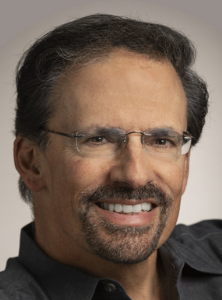
According to a 2020 American Health Care Association (AHCA) survey of 463 nursing home providers in August 2020, 72% of nursing homes said they won’t be able to sustain operations another year at the current pace of increased costs and revenue loss.
What’s causing operating expenses to dramatically increase? According to the same AHCA survey, the overwhelming majority of increased costs can be attributed to the COVID-19 pandemic; 95% of participants said that they expect to continue to incur significant expenses as a result of COVID, especially in the area of PPE supplies. Government funding is helping these facilities to sustain operations, but this is only a temporary solution.
With multiple buildings across their campuses, senior living communities often operate much more like a small town than a singular facility. And they play a unique double role: they’re not just a home for elders, but a major employer as well. Nursing home administrators must find new and creative ways to reduce operational costs if they expect to maintain their services to the elderly — fortunately, curbing energy use can have an instant and dramatic impact on monthly expenses.
According to energystar.gov, healthcare facilities spend $6.5 billion on energy each year, and every $1 a nonprofit healthcare facility saves on energy is equivalent to generating $20 in new revenue. Senior care facilities of all types can benefit from trimming their energy use, but achieving optimal energy efficiency is often no easy feat for these facilities; even attempting to reduce energy consumption in a single building or wing can prove challenging. Buying, retrofitting, reprogramming and managing multiple pieces of technology is not cheap and there’s often no guarantee that everything implemented will integrate properly for the facilities to realize expected energy reductions.
To help solve this conundrum, many skilled nursing facilities and nursing homes are turning to third-party Energy-Efficiency-as-a-Service (EEaaS) organizations for assistance in discovering what costs can be recouped from expert energy reduction programs. These EEaaS companies conduct an audit to identify areas of inefficient energy consumption and make changes that both create a more comfortable living environment and ensure maximum savings. After conducting the audit, energy management experts upgrade the facility system-wide, which can include LED lighting retrofits, faucet pressure controllers, a high-efficiency HVAC system, programmable lighting fixtures, thermostats and water heaters. After installing the upgrades, occupancy sensors assist in maximizing efficiency in main areas as well as offices and back-of-house operations, adjusting to the correct temperature and lighting during and after use.
Perhaps one of the most important aspects of an energy efficiency upgrade is a facility’s HVAC system. These systems must provide healthy air along with a comfortable heating and cooling environment. In addition, HVACs are also a part of a healing environment for residents and any failure — especially during times of extreme weather — can result in an emergency situation. With COPD, asthma and other respiratory disorders affecting 1 in 7 seniors, this population has a greater dependency on indoor air quality than other age groups. As part of these energy efficiency upgrades, HVAC experts ensure the facility’s air quality is always optimal with additional HEPA filters for allergens and UV bombardment installations, which act as antiviral and antibacterial to aerosols found in the air.
This year, nursing home and senior living administrators are fighting through a financial quagmire in an attempt to maintain operations. Expenses related to a year of pandemic combat continue to add up; their top cost increases per COVID-related category, include PPE supplies (95%), staffing (78%) and testing (74%). Given these cost increases, simply reminding folks to turn the lights off when leaving the room or turn down the thermostat is not an effective option to recoup costs via energy reduction methods.
Senior care communities of all types can benefit from an EEaaS, strategic energy assessment and efficiency consulting approach. They can take advantage of the convenience of expert installation as well as the reduced energy bills — at zero cost for the capital equipment upgrades. “Zero cost” upgrades might seem too good to be true, and administrators have a right to be skeptical about these types of assessments, but caveat emptor — “buyer beware”— is not applicable when nothing is bought, and there are never any out-of-pocket costs when working with credible EEaaS organizations. The top EEaaS companies assume all the associated costs and only realize payment vis-a-vis a portion of the monthly energy savings realized. The remainder of the money saved stays with the facility and can be used however the facility sees fit; whether to offset COVID-19 related expenses, hire new employees or improve other aspects of care.
Ensuring a comfortable and safe environment for seniors is an expense, but this line item can be reduced with the expert installation of modern energy-efficiency upgrades — with a guaranteed ability to recoup a portion of unnecessary OPEX going to energy bills thanks to an EEaaS partner.
As founder and CEO of Budderfly, Al Subbloie is focused on disrupting the Energy Management space through a unique and highly compelling Energy as a Service technology solution. His 35 years of experience include founding three companies and serving as Board Member for several successful software and managed services businesses. Al is passionate about creating highly successful, disruptive go to market growth models.
The opinions expressed in McKnight’s Long-Term Care News guest submissions are the author’s and are not necessarily those of McKnight’s Long-Term Care News or its editors.




